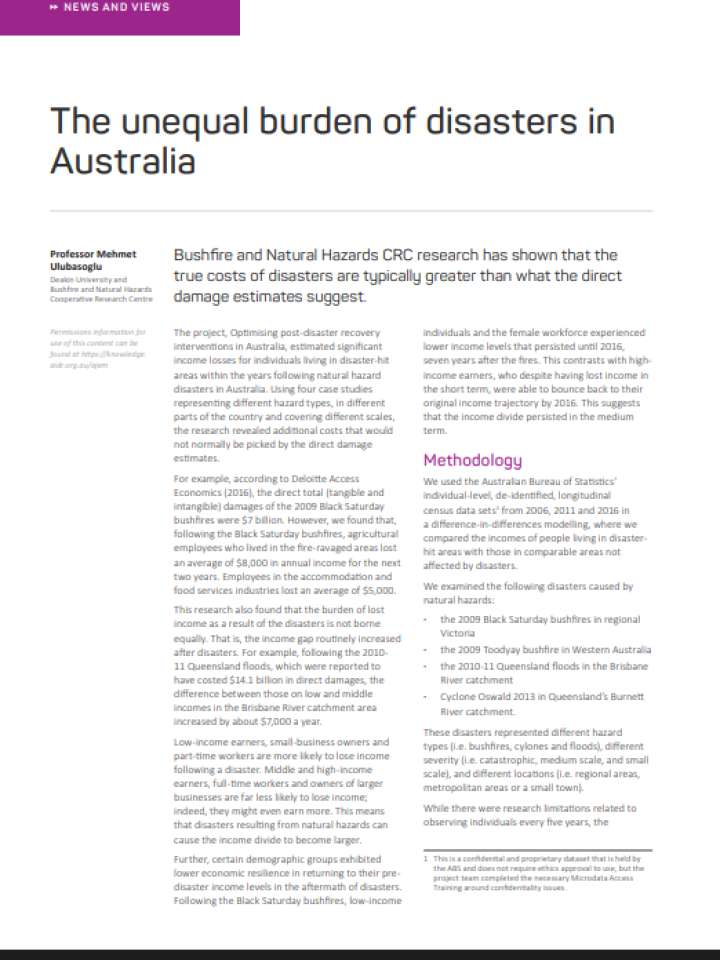The unequal burden of disasters in Australia
This research project, in accordance with bushfire and natural hazards CRC research, shows that:
- the true costs of disasters are typically greater than what the direct damage estimates suggest. For example, a former project, Optimising post-disaster recovery interventions in Australia, estimated significant income losses for individuals living in disaster-hit areas within the years following natural hazard disasters in Australia. Using four case studies representing different hazard types, in different parts of the country and covering different scales, this new research revealed additional disaster-induced costs that would not normally be picked by the direct damage estimates.
- the burden of lost income as a result of the disasters is not borne equally. That is, the income gap routinely increased after disasters. For example, following the 2010- 11 Queensland floods, which were reported to have costed $14.1 billion in direct damages, the difference between those on low and middle incomes in the Brisbane River catchment area increased by about $7,000 a year.
To do so, it used the Australian Bureau of Statistics’ individual-level, de-identified, longitudinal census data sets from 2006, 2011 and 2016 to compare the incomes of people living in disasterhit areas with those in comparable areas not affected by disasters. It examined the following disasters caused by natural hazards that represent different hazard types (i.e. bushfires, cylones and floods), different severity (i.e. catastrophic, medium scale, and small scale), and different locations (i.e. regional areas, metropolitan areas or a small town):
- the 2009 Black Saturday bushfires in regional Victoria
- the 2009 Toodyay bushfire in Western Australia
- the 2010-11 Queensland floods in the Brisbane River catchment
- Cyclone Oswald 2013 in Queensland’s Burnett River catchment.
While there were research limitations related to observing individuals every five years, the anonymised census dataset comprises a five per cent representative sample of the Australian population, providing a significant amount of observations that enable a granular analysis. Also, findings that were common and robust across the different disasters provided additional confidence in the results
Explore further
